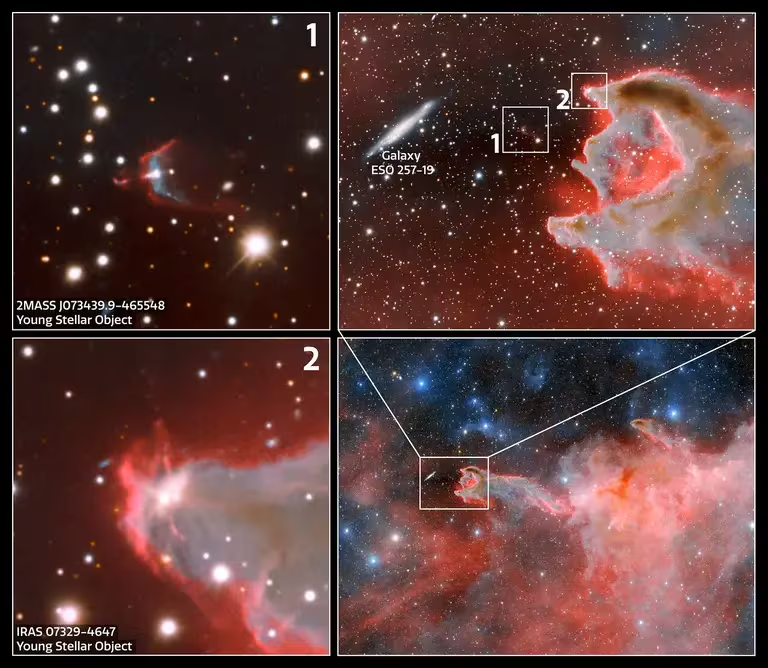Astronomers Capture a New Image Of The "Hand of God" Traversing The Cosmos From Mount Tololo

Here's everything you need to know.
Astronomers have recently captured a stunning image of the "Hand of God" stretching across the cosmos, all the way from Mount Tololo. Situated some 1,300 light-years away in the Puppis constellation, this eerie hand emerges from the depths of interstellar space, reaching out into the vast expanse of the universe. Known scientifically as CG 4, this nebulous and mysterious structure has earned its nickname due to its striking resemblance to a hand, but in other words, it's a pulsar wind nebula.
CG 4 belongs to a category of celestial bodies called cometary globules, a subset of dark nebulae known as Bok globules. These are essentially isolated clouds of dense cosmic gas and dust, shrouded by surrounding hot ionized material. What sets cometary globules apart is their peculiar shape, often resembling a comet with an extended tail, despite having no actual connection to comets.

In the captivating image captured by the Dark Energy Camera (DECam) on the Victor M. Blanco Telescope, CG 4's distinctive features are unmistakable. Its dusty head, spanning 1.5 light-years in diameter, and its elongated tail stretching about eight light-years, mark it as a relatively small Bok globule in the vastness of space.
First identified in 1976, these cometary globules remained largely unnoticed by astronomers for decades due to their faint appearance. However, advancements in technology, such as the Hydrogen-Alpha filter used by DECam, have allowed scientists to peer into their secrets. This specialized filter reveals the faint red glow of ionized hydrogen within CG 4, shedding light on its inner workings despite the veils of stardust that surround it.
CG 4, like many others of its kind, is believed to be a remnant of a supernova explosion that occurred roughly a million years ago. These structures, nestled within the vast Rubber Nebula, hold clues to the processes of star formation and the effects of nearby massive stars' radiation.
While the exact mechanisms behind the formation of cometary globules remain a mystery, astronomers believe that they may be the result of disruptions caused by nearby supernovae or the combined forces of stellar winds and radiation pressure from massive stars, causing it to emit lower-energy X-ray light. Regardless of their origins, these enigmatic structures continue to captivate and intrigue astronomers as they unveil the secrets of the cosmos.

